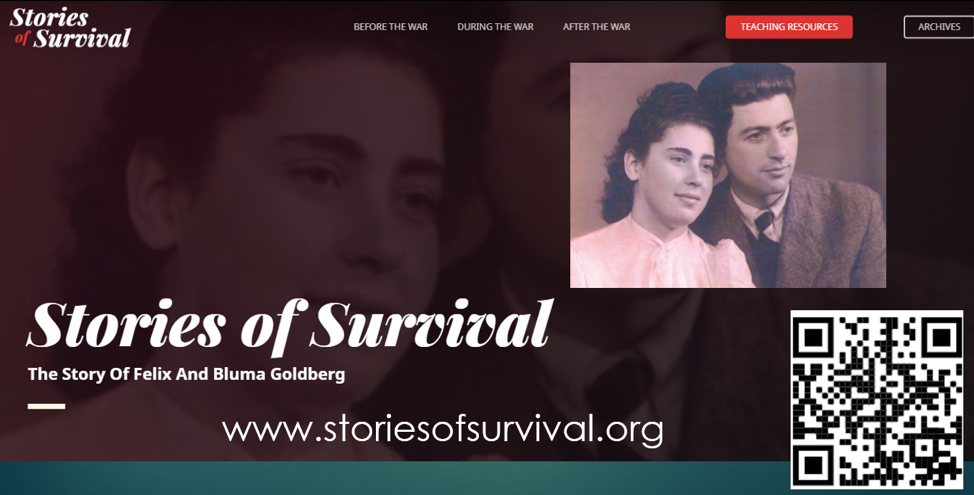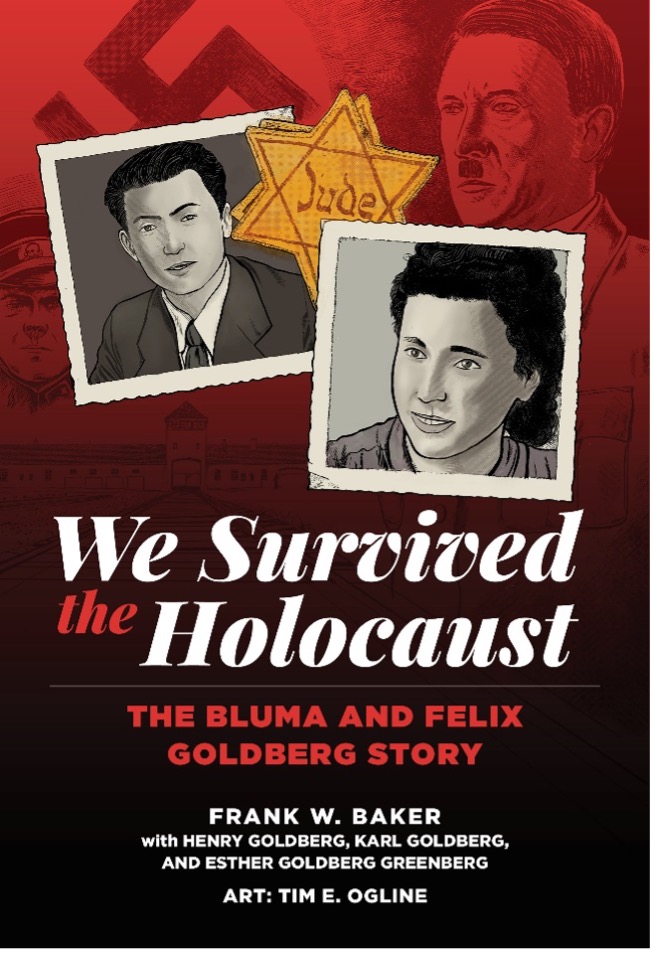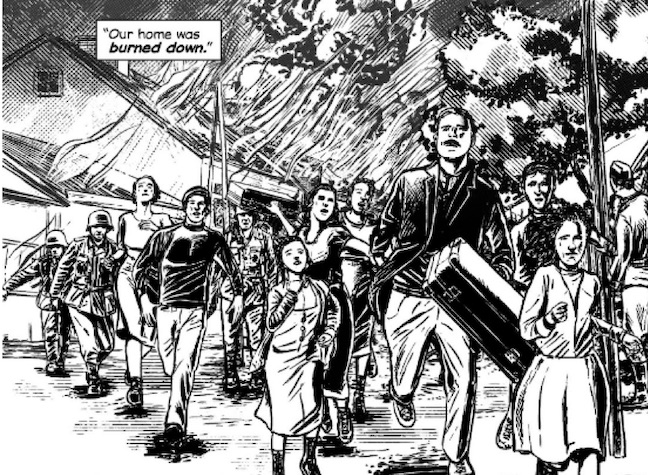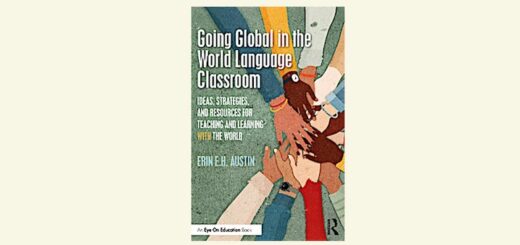Family’s Holocaust Story Too Graphic for District
By Frank W. Baker

I wrote about the development of my graphic novel here at MiddleWeb when it was first published in 2022. I’ll recap some of those details first, before I share my own Banned Books Week story.
The backstory
In the year 2000, Holocaust survivor Felix Goldberg testified at our synagogue in Columbia SC about his experiences as a slave laborer during World War II. I was in the audience, and after delivering that speech, he approached me (knowing that I was an educator) and asked me to “do something with it.”
Years later, with the blessing of the family members, we initially created a website for teachers: www.StoriesofSurvival.org which details his story and that of his wife Bluma, starting before the war and continuing during and after the war. The website includes a historical timeline as well as geographic maps of the areas addressed in the book. We began sharing this resource with social studies teachers and with teachers of the Holocaust.
Some time later, recognizing that I had created a resource designed primarily for educators, I decided that I must do something more – something for young people.
I was aware that graphic novels have been extremely popular with young people, and I talked with a University of South Carolina professor who had authored one of her own. She advised me to seek out an editor at a small publisher who immediately saw the value not only in the Goldberg story, but also in the history of antisemitism and the Germany laws that led up to the deaths of six million Jews.
The next thing I knew, I had a contract and began writing scenes and dialogue for a graphic novel version. (All of this reminded me of what it must be like to be a screenwriter – taking a previously written work and translating it for the screen.) I worked closely with an editor and with Tim Ogline, an award-winning illustrator, and long before I expected we had a book.
My primary goal was always educational
I think it is important to emphasize here that my goal in writing this book was to educate young people, using a medium that is very popular. I decided to donate all of my royalties and speaking fees to furthering Holocaust education which has allowed us to purchase more books to distribute to interested educators.
I had come to understand that many young people today (and adults who grew up in the past 40 years) lack essential knowledge about this time period in history. A Claims Conference 2020 survey discovered that almost half of millennials could not name a single concentration camp, ghetto or work camp.
Distributing the book to librarians, as well as social studies and English teachers, has been one of the most satisfying events of my life. In addition to the book, we created a companion teacher guide, which we offer as a free download from our website.
Frequently the Goldberg family members join me when I speak to schools and answer questions from students. School librarians across South Carolina have often told me that their students are very interested in the Holocaust.
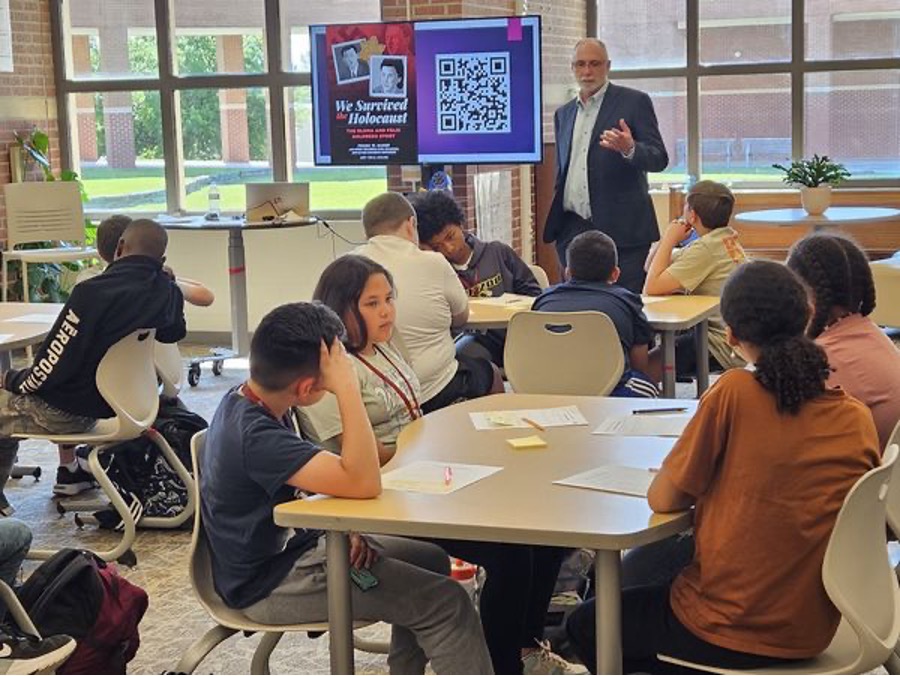
The book is not appropriate, they claimed
This August I received an email from the social studies coordinator at a school district near my home in Columbia. She noted that several of her middle school teachers were interested in my offer of classroom sets of the graphic novel. She inquired about the grade level audience for the book (which we had established as 5th-12th) and requested a copy.
I replied that several of her schools already had copies of the book on hand since we had distributed complimentary copies, thanks to the Goldberg family, during recent meetings of state school librarians.
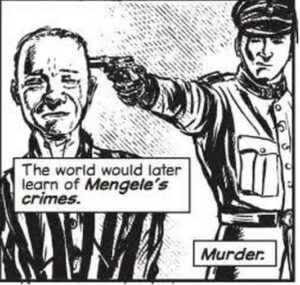
She also requested that we not fulfill any future requests from her middle schools. Copies of the book already in place could remain, the district decided.
I agreed to comply with her request. At the same time, I was shocked and appalled. What were they thinking? Is that image any more graphic than what middle school students might be exposed to in social media, video games and television? Much less so, I’m sure. And what about the historical context? Was there any discussion on their part about the effects of popular culture images on this age group, by comparison? I don’t know, but I doubt it.
The South Carolina Council for the Holocaust, which organizes summer teacher training, had previously purchased copies of our book and distributed them to participating teachers with no prior complaints. But now they’ve also raised concerns, saying educators and students are apparently more sensitive to these kinds of images than we might have anticipated. That was news to me.
What’s next
I’m disappointed by the action taken in the local school district, which gained national visibility when the Associated Press picked up a local news story.
It is my opinion that the district decision to prohibit general distribution of the book in their middle schools amounts to book banning. It is, perhaps, a sign of rising self-censorship by systems and schools.
But we are not discouraged.
We will continue to offer educators in grades 5-12 the classroom sets of our book, after they respond to a series of questions about how they will use the book with students. One of those questions asks them if they will consider inviting us into the classroom so that we can elaborate on the text and visual content and answer student questions.
The book has received rave reviews, and I am pleased to see that it is already in many public and school libraries across the US. I’ll conclude with this recent review, written by an educator in the district that chose to restrict its use. He said:
“This text was used with a larger 6th grade collaborative lesson and the students were truly captivated by the local (Columbia) connection. Students were able to draw larger connections about World War II, while maintaining the intimacy of Bluma and Felix’s unique and individual stories.
“Attention to detail was given…(by the book to) historical accuracy of maps, human movement, and timelines…a great way to innovate how timelines are taught and studied within social studies/history classes.”
For 10 years, media educator Frank Baker contributed columns and blogs to MiddleWeb about media literacy. He is also the author of Close Reading The Media – a publishing collaboration between MiddleWeb and Routledge/Eye On Education. He can be reached at fbaker1346@gmail.com. Visit his extensive media literacy website here.

